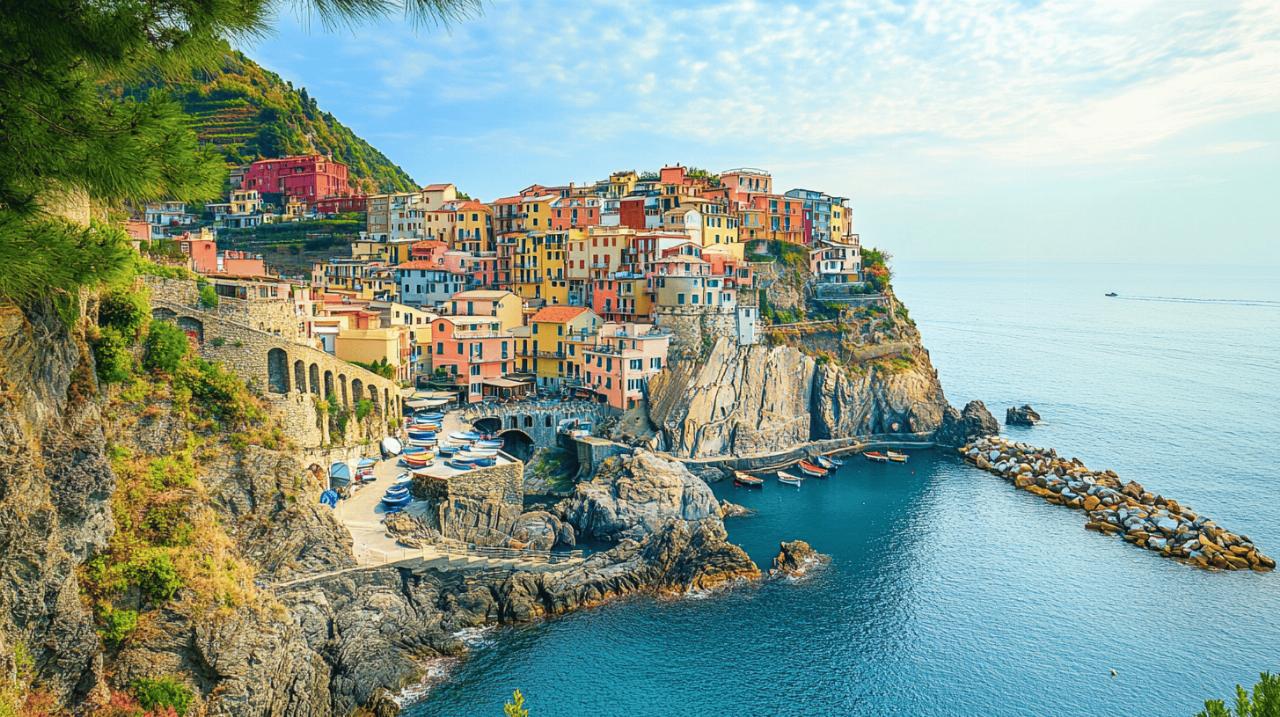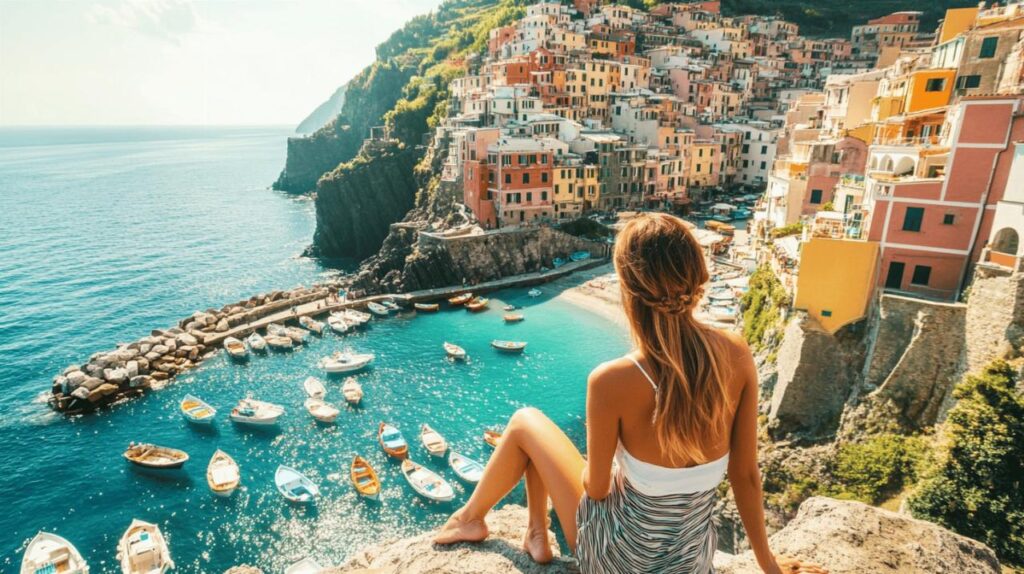Italy, with its rich tapestry of history, culture, and stunning landscapes, attracts millions of visitors each year. Yet, truly experiencing this beautiful country goes beyond checking off famous landmarks. This guide will help you discover the authentic Italy that locals cherish, with insights that transform your journey from a typical tourist experience into a genuine cultural immersion.
Master the Italian language basics
While many Italians in tourist areas speak English, learning basic Italian phrases shows respect and opens doors to more meaningful connections. Eago emphasizes that even simple greetings like “Buongiorno” (good morning) or “Grazie” (thank you) can transform interactions with locals. This small effort demonstrates your interest in Italian culture beyond the superficial tourist experience.
Essential phrases for everyday interactions
Focus on mastering practical expressions for ordering food, asking directions, and basic pleasantries. Italians genuinely appreciate visitors who make an effort to communicate in their language, even if imperfectly. Practice pronunciation before your trip, as correct intonation can make a significant difference in being understood.
Regional dialects and expressions to know
Italy has remarkable linguistic diversity, with dialects varying significantly between regions. While standard Italian works throughout the country, recognizing regional expressions adds depth to your experience. Northern Italian dialects differ considerably from southern ones, reflecting the country’s complex history before unification in 1861.
Timing your Italian adventure perfectly
Choosing when to visit Italy dramatically impacts your experience. The shoulder seasons of spring and autumn offer the ideal balance of pleasant weather and manageable crowds. Avoid August when possible, as this is when many Italians take their holidays, resulting in coastal areas becoming crowded while many businesses in cities close.
Why spring and autumn offer the best experience
May through June and September through October provide comfortable temperatures and fewer tourists compared to the peak summer months. During these periods, you can explore historic attractions without excessive queuing and find accommodation at more reasonable rates. The spring brings vibrant wildflowers to the countryside, while autumn offers harvest festivals and seasonal culinary delights.
Monthly events and festivals worth planning around
Consider organizing your trip around iconic cultural events like the Palio of Siena in July and August, Verona’s opera season, or Milan Fashion Week. Sports enthusiasts might enjoy timing their visit with the Giro d’Italia cycling race or Formula One Grand Prix events in Imola and Milan. The 2025 Jubilee Year in Rome is expected to draw approximately 30 million pilgrims, making advance planning essential if you wish to visit during this significant period.
Navigating Italy’s transport network
Italy boasts an extensive public transportation system that often proves more efficient than driving, especially in urban areas. Understanding how to navigate this network enhances your mobility and provides authentic glimpses into everyday Italian life.
Making the most of Italy’s extensive train system
The Italian rail network connects major cities and smaller towns with remarkable efficiency. High-speed trains like Frecciarossa link major urban centers, while regional trains offer scenic routes through the countryside. Purchase tickets in advance for high-speed services to secure better rates, and remember to validate your ticket before boarding to avoid fines.

Local bus routes and tickets: what you need to know
Within cities and rural areas, buses complement the rail system by reaching places trains cannot. City buses typically require tickets purchased in advance from tabacchi shops or newsstands rather than from drivers. Familiarize yourself with local transport apps that provide real-time schedules and route planning to navigate unfamiliar systems confidently.
Embracing authentic Italian cuisine
Italian food varies dramatically by region, with each area proud of its culinary traditions. Moving beyond tourist-oriented restaurants reveals the true depth and diversity of Italian gastronomy.
Finding the best local markets in different regions
Fresh markets serve as the heart of Italian food culture. Visit early morning markets to observe locals selecting the day’s ingredients and engage with vendors about their products. These markets offer insight into seasonal availability and regional specialties while providing opportunities to purchase picnic supplies or unique food souvenirs.
How to spot genuine trattorias away from tourist traps
Authentic dining experiences often hide in side streets away from major attractions. Look for restaurants with menus written only in Italian, reasonable prices, and locals dining inside. True trattorias typically offer limited menus that change seasonally, focusing on regional specialties rather than providing a nationwide tour of Italian cuisine.
Living la dolce vita: adopting the Italian lifestyle
The essence of Italian travel lies in slowing down and savoring experiences. Adapting to the Italian rhythm of life transforms your vacation from a checklist of sights into a genuine cultural immersion.
The art of the passeggiata and social etiquette
Join the evening passeggiata, the traditional Italian stroll through town centers, to experience community life. This daily ritual provides opportunities to observe how Italians socialize and dress for casual outings. Remember that Italians value elegant presentation and tend to speak more softly in public than many visitors expect.
Understanding Italy’s relaxed approach to time
Embrace the more fluid concept of time that characterizes Italian culture. Meals are meant to be enjoyed slowly, with lunch potentially lasting hours. Shops often close for extended midday breaks, especially in smaller towns. Adjusting your expectations allows you to synchronize with local rhythms rather than fighting against them.
Respecting cultural norms and traditions
Italy maintains certain cultural expectations, particularly regarding behavior in religious sites and social interactions. Understanding these norms helps you show appropriate respect while traveling.
Dress codes for churches and historical sites
Religious sites require modest attire, with covered shoulders and knees for all visitors. Carrying a light scarf or shawl helps address dress code requirements when entering churches spontaneously. Some major basilicas and cathedrals enforce these rules strictly, potentially denying entry to inappropriately dressed visitors.
Social customs and greetings across different regions
Italians typically greet acquaintances with kisses on both cheeks, though regional variations exist. When entering shops or restaurants, a polite greeting establishes goodwill. Maintaining eye contact during conversations and toasts demonstrates respect, while avoiding discussing business during meals aligns with Italian social expectations.
Planning and booking strategically
With Italy receiving approximately 80 million international visitors annually, strategic planning becomes essential for a smooth experience, particularly at popular destinations.
When to reserve accommodations and popular attractions
Book accommodations several months in advance, especially when visiting during festival periods or summer months. For major attractions with limited capacity, such as Leonardo da Vinci’s Last Supper or the Uffizi Gallery, secure tickets weeks or even months ahead. Sites associated with Michelangelo or those with UNESCO status typically require advance planning.
Digital tools and apps to enhance your Italian experience
Utilize specialized travel apps for navigating public transportation, translating menus, and discovering less-known attractions. Digital museum passes and city cards often provide cost savings and queue-skipping privileges. Remember to download offline maps and essential phrases before traveling to areas with potentially limited connectivity.
Venturing off the beaten path
Despite its popularity, only about one percent of Italy receives the majority of tourist traffic. Exploring beyond the famous triangle of Rome, Florence, and Venice reveals a different country entirely.
Hidden towns and villages worth exploring
Consider visiting places like Agrigento in Sicily, named the 2025 Italian Capital of Culture, or exploring the historic centers of smaller cities such as Lucca, Ravenna, or Matera. These destinations offer authentic experiences without the overwhelming crowds of major tourist centers.
Rural Italy: landscapes and experiences beyond the guidebooks
The Italian countryside provides distinctive regional experiences, from vineyard tours in Tuscany to coastal villages along the Adriatic. The Via Francigena, a historic 1,700-kilometer pilgrimage route stretching from England to Puglia, offers opportunities for meaningful slow travel through diverse Italian landscapes.
Mastering Italian coffee culture
Coffee in Italy transcends mere beverage status to become a cultural institution with its own customs and rituals.
Coffee ordering etiquette and terminology
Italians consume over 14 billion espressos annually, typically standing at the bar rather than sitting at tables. Order simply by asking for a caffè rather than specifically requesting an espresso. Remember that cappuccino is considered a morning drink, with consumption after 11 AM marking you clearly as a tourist.
Regional coffee specialities and when to drink them
Different regions offer unique coffee variations worth sampling. Try caffè al ginseng in northern Italy or caffè corretto with a splash of liqueur. Coffee breaks in Italy tend to be brief rather than extended sessions, with espresso often consumed quickly while standing.
Connecting with locals meaningfully
The most memorable Italian experiences often come through genuine connections with residents who share their perspective on local culture and traditions.
Participating in community events and workshops
Look for opportunities to join cooking classes, wine tastings, or artisan workshops that provide hands-on cultural experiences. Seasonal festivals offer windows into traditions that may date back centuries, allowing you to observe and sometimes participate in authentic community celebrations.
Homestays and cultural exchange opportunities
Consider accommodation options that facilitate interaction with locals, from family-run bed and breakfasts to agriturismi on working farms. These settings provide natural opportunities for cultural exchange and often result in personalized recommendations that guidebooks cannot offer. Taking the time to develop these connections transforms your understanding of Italy from theoretical to experiential.

